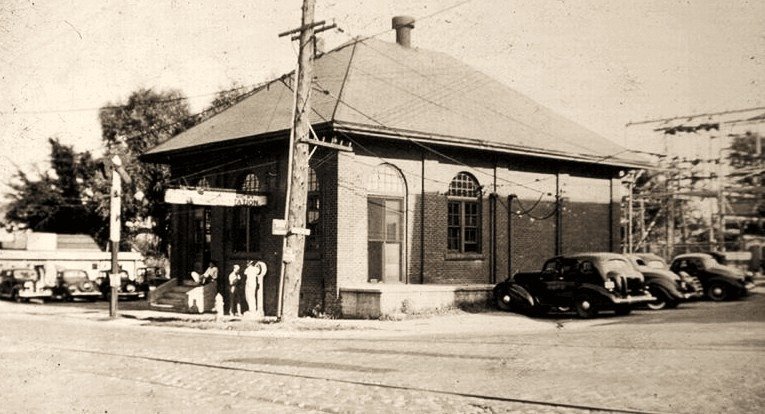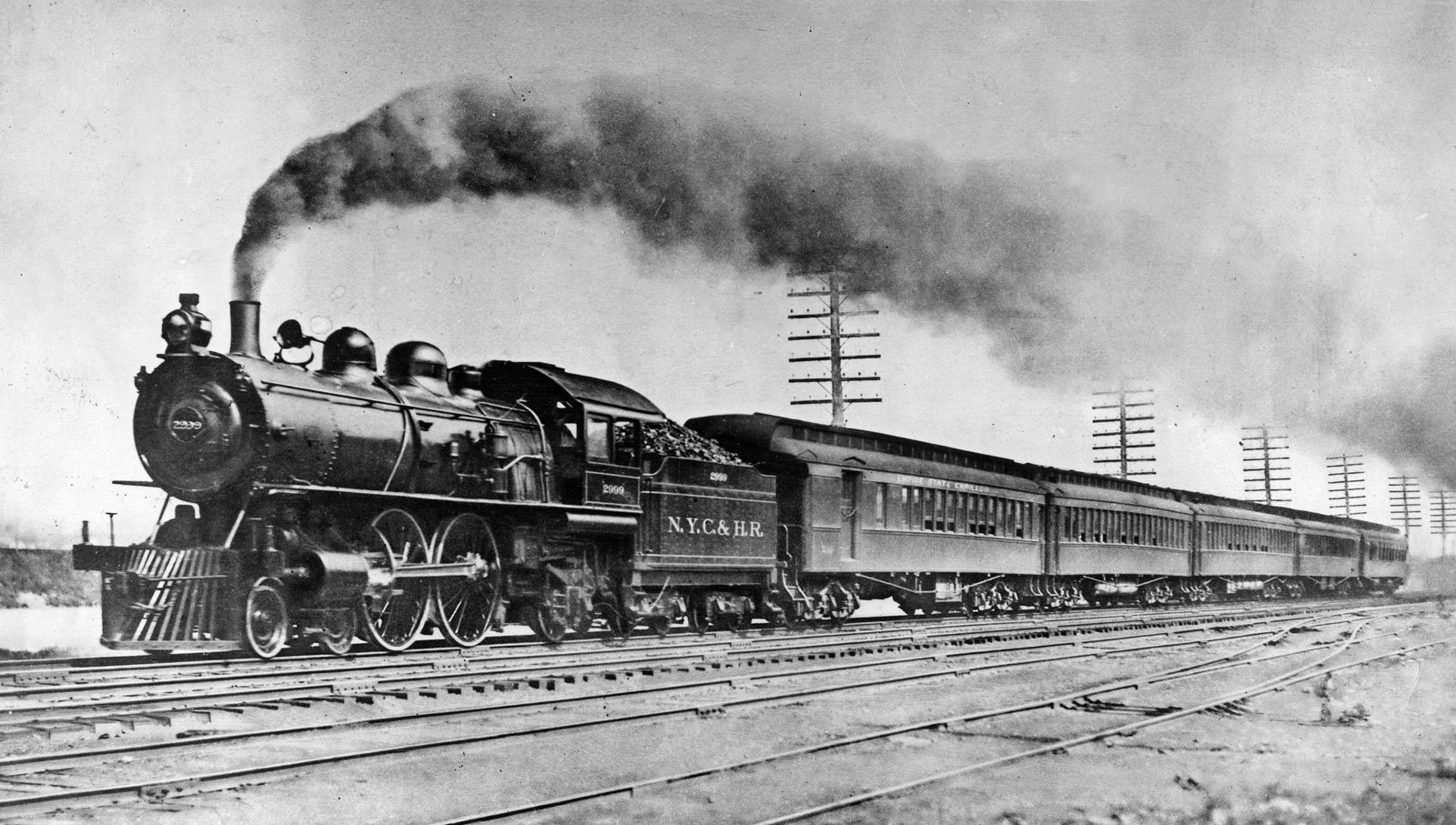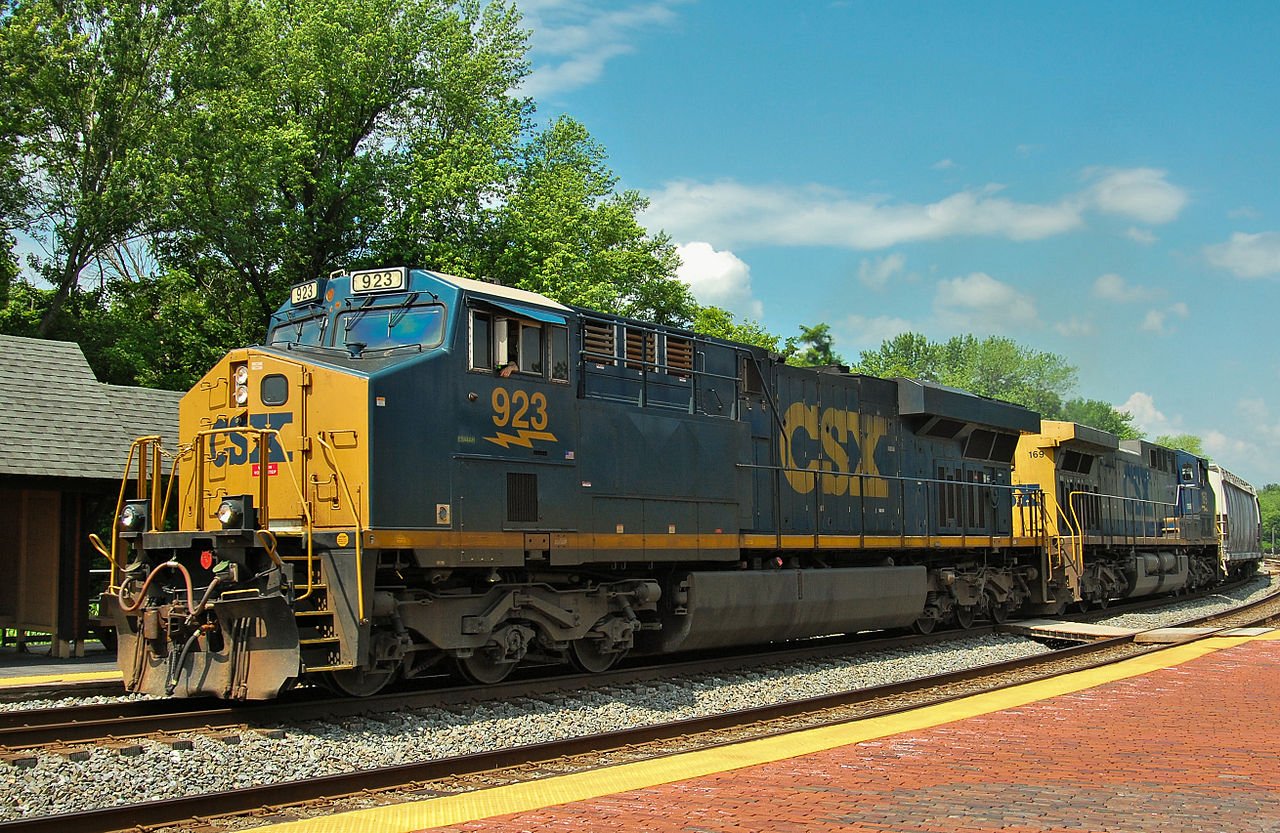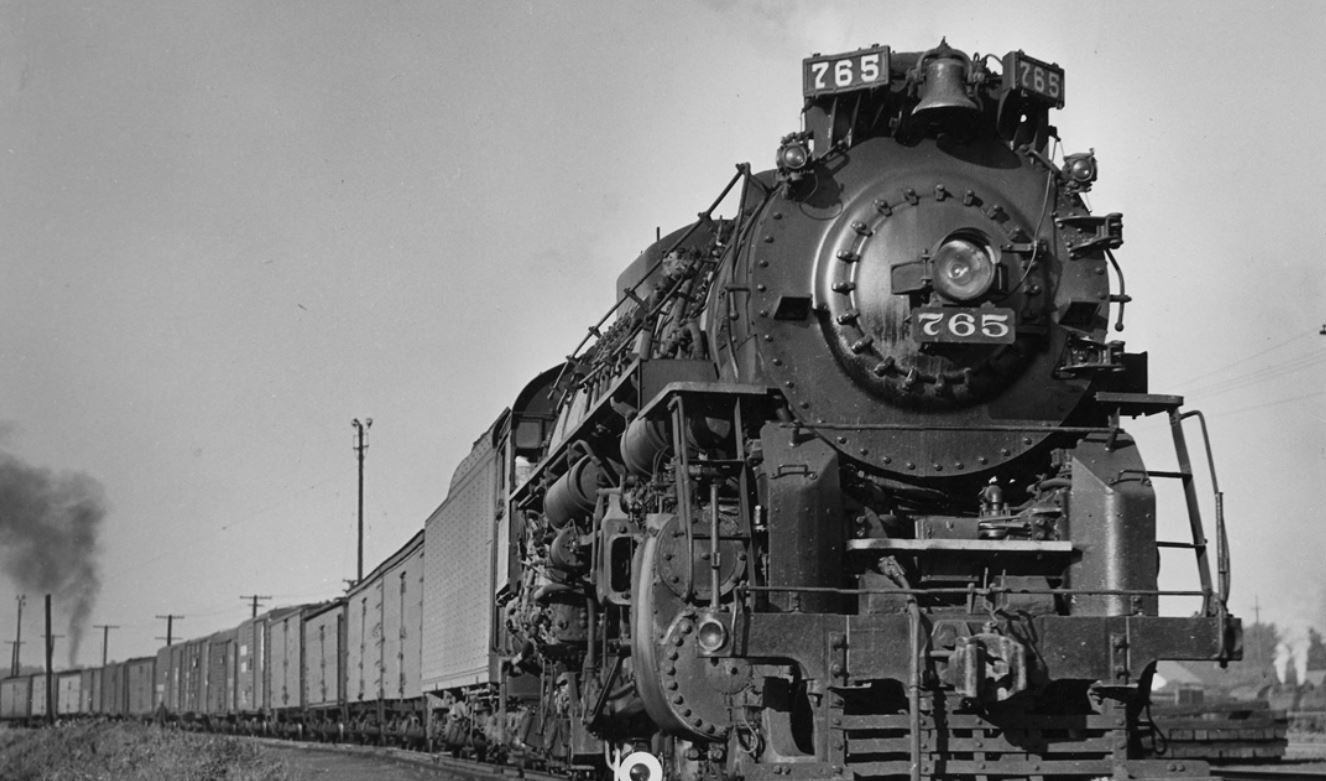The Lake Shore Electric Railway
The first trolleys ran from Sandusky to Vermilion in 1899, an offshoot of the Sandusky Street Railway, the Sandusky & Interurban Electric Railway. City-style cars prowled the rails when it opened from Sandusky to Vermilion via Huron on July 26, 1899, a 24-mile sprint. Work gangs toiled eastward to meet the Lorain & Cleveland in Lorain, another 10-mile hop. The S & I was built with an expansive eye to the future -- double track provisions were engineered into all bridges as well as into the roadbed. It was a combination roadside and private right-of-way operation. In the autumn of 1901, the Everett-Moore Syndicate absorbed the S & I and others to create the Lake Shore Electric Railway.
The Lake Shore Electric Railway (LSE) was an interurban electric railway that ran primarily between Cleveland and Toledo, Ohio. Through arrangements with connecting interurban lines, it also offered service to Fostoria and Lima, Ohio, and Detroit. The line served many communities along the south shore of Lake Erie, at a time of mostly horse-drawn vehicles on dirt roads, with innovative, high-speed transportation that rivaled the area's steam railroads. It helped to develop tourism as a major industry in northern Ohio; by serving several lake shore recreation areas (some owned by LSE and others privately owned) such as Avon Beach Park in Avon Lake; Linwood Park in Vermilion; Crystal Beach, Beulah Beach, Mitiwanga Park and Ruggles Grove (Ruggles Beach) between Vermilion and Huron; Sage's Grove and Rye Beach in Huron. It also brought large numbers of visitors to a ferry dock serving a small beach park and picnic ground off Sandusky called Cedar Point, that evolved into the giant amusement park resort of today.
It was formed August 29, 1901, through the merger of several smaller interurban railways: Lorain and Cleveland Railway, running between Cleveland and Lorain, and intent on building westward at the time of the merger. Sandusky and Interurban Railway (S&I), which had begun as a local transit operation in Sandusky and was building eastward from Huron to Lorain at the time of the merger. Toledo, Fremont and Norwalk Railway (TF&N), serving Toledo, Fremont, and Norwalk and building eastward toward Lorain at the time of the merger. Sandusky, Milan and Norwalk Railway, formed in 1893 and one of the earliest interurban railway companies in the United States, between Sandusky and Norwalk, via Milan.
This line served as the earliest physical connection between the Sandusky and Interurban Railway and the Toledo, Fremont and Norwalk Railway after the merger. It became a branch line after completion of the previously planned TF&N line east from Norwalk to connect to the S&I at "Ceylon Junction", a few miles east of Huron. It was also the first portion of the Lake Shore Electric system to be abandoned, ending service on March 29, 1928. The LSE later added the following interurban lines and operated them as branches: Lorain Street Railway, which ran between Lorain and Elyria and operated Lorain local transit services.
Avon Beach and Southern Railway, which ran between South Lorain and "Beach Park" in Avon Lake, the location of a Lake Shore Electric resort park, passenger station, car barn and electrical generating station. A small portion of this line is the only part of the original LSE system still in operation today, becoming what is now a Norfolk Southern Railway branch serving the FirstEnergy Corporation's Cleveland Electric Illuminating Company (CEI) generating station at Avon Lake. This plant was first built to replace the LSE power plant at the same location that was destroyed in an explosion and fire in 1925.
The Lake Shore Electric built a short branch to Gibsonburg, Ohio that opened on December 21, 1901. This branch was built as part of a planned expansion by LSE south and west to Findlay and Lima. This goal was reached instead by joint services with the Fostoria and Fremont Railway and the Western Ohio Railway, and the line never went beyond Gibsonburg. It built a new route between Fremont and Sandusky via Castalia, commencing service on July 21, 1907, and later relocated some of its lines in Huron (opened in 1918) and Sandusky (opened in 1931).
The Lake Shore Electric at its height offered multiple-unit trains of interurban cars from Cleveland and Toledo. These trains would split in Fremont on the west and at Ceylon Junction (a passenger station on the former S&I line east of Huron at the connection with the former TF&N branch to Norwalk) on the east. After splitting, some cars would travel via the Huron, Sandusky and Castalia route and other cars would go via the Norwalk, Monroeville, Bellevue, and Clyde, route. The service was scheduled so the cars would re-join at Fremont and Ceylon Junction, respectively, to continue on to their destinations in Toledo or Cleveland.
The Lake Shore Electric achieved national notoriety through the heroism of a motorman, William Lang, who climbed out of his moving trolley car and snatched a 22-month-old child off the tracks on August 24th, 1932, near Lorain, Ohio. The young girl, Leila Jean Smith, grew to adulthood and they remained friends for the rest of his life.
As its passenger business waned with the increasing number of private automobiles on paved roads, it outlived most connecting interurban lines by concentrating on freight services. However, the Lake Shore Electric went into bankruptcy on October 5, 1932, and ended interurban rail operations on May 15, 1938, with Car #167 making the last run out of Cleveland.
Several physical remnants of the Lake Shore Electric can still be found today. In the cities of Bay Village and Avon Lake are streets named "Electric," running over the former right-of-way. Also, bridge piers can be found at the Cleveland Metroparks Huntington Reservation and in Rose Hill Park, both in Bay Village, and at several other locations. Much of its route can still be traced in northern Ohio by power lines on unusually high utility poles, where LSE's former electrical transmission infrastructure became the property of area utility companies.

Norfolk Southern Railway
The Norfolk Southern (AAR reporting marks NS) is a major Class I railroad in the United States, owned by the Norfolk Southern Corporation. The company operates 21,500 route miles in 22 eastern states, the District of Columbia and the province of Ontario, Canada. The most common commodity hauled on the railroad is coal from mines in Kentucky, Pennsylvania, Tennessee, Virginia and West Virginia. The railroad also offers an extensive intermodal network in eastern North America. The current system was planned in 1982 with the formation of the Norfolk Southern Corporation, merged on December 31, 1990, with the lease of the Norfolk and Western Railway by the Southern Railway which had been renamed Norfolk Southern. In 1999, the Norfolk Southern Railway grew substantially with the acquisition of over half of Conrail. Norfolk Southern is currently buying DC traction diesel locomotives. There are a small number of AC traction diesels on their roster. They are EMD SD80MACs, all of which were inherited from Conrail. Currently, 10 of the 17 EMD SD80MACs are assigned to the locomotive pool in South Fork, Pennsylvania. Other AC locomotives also on the roster include a dwindling number of aging GP38ACs of Norfolk & Western and Southern Railway heritage.
Norfolk Southern's GE Dash-9 locomotives are often called "catfish" by railfans, as the stripes are said to look like catfish whiskers. The locomotive numbered 4610, a GM-EMD GP59, is painted in predecessor Southern Railway colors of green and white with gold trim and is a favorite of railfans. The work was done at the Debutts Yard in Chattanooga, Tennessee during the summer of 1994 and the locomotive received a repaint in the summer of 2004.
The current paint scheme for NS locomotives is black and white. Many of the locomotives are painted with a rearing horse on the nose, which is consistent with prior marketing campaigns where NS has billed itself as "The Thoroughbred".
In 2005, Norfolk Southern added two new types of locomotives to its roster: the EMD SD70M-2s, which when all are delivered, will be numbered 2649–2778, and GE ES40DCs, which will be numbered 7500-7719.
In September 2008, Norfolk Southern purchased 24 new GE ES44AC locomotives numbered 8000-8023, and they began receiving these units in October 2008. They are the first new AC locomotives ever purchased by NS. These new locomotives will be used for pusher service on long haul coal trains.

New York Central Railroad
The New York Central Railroad (AAR reporting marks NYC), known simply as the New York Central in its publicity, was a railroad operating in the Northeastern United States. Headquartered in New York, the railroad served most of the Northeast, including extensive trackage in the states of New York, Pennsylvania, Ohio, Michigan, Indiana, Illinois and Massachusetts, plus additional trackage in the Canadian provinces of Ontario and Quebec. Its primary connections included Chicago and Boston. The NYC's Grand Central Terminal in New York City is one of its best-known extant landmarks.
In 1968 the NYC merged with its former rival, the Pennsylvania Railroad, to form Penn Central (the New York, New Haven and Hartford Railroad joined in 1969). That company soon went bankrupt and was taken over by the federal government and merged into Conrail in 1976. Conrail was broken up in 1998, and portions of its system was transferred to the newly formed New York Central Lines LLC, a subsidiary leased to, and eventually absorbed by CSX. That company's lines included the original New York Central main line, but outside that area it included lines that were never part of the NYC system.
The famous Water Level Route of the NYC, from New York City to upstate New York, was the first four-track long-distance railroad in the world.
For most of the twentieth century the New York Central was known to have some of the most famous train routes in the United States. Its 20th Century Limited, begun in 1902, ran from Grand Central Terminal in New York to LaSalle Street Station Chicago and was its most famous train, known for its red-carpet treatment and first-class service. The Century, which followed the Water Level Route, could complete the 960.7-mile trip in just 16 hours after its June 15, 1938, streamlining (and did it in 15 1/2 hours for a short period after WWII). Also famous was its frequent Empire State Express service through upstate New York to Buffalo and Cleveland, and Ohio State Limited service from New York to Cincinnati. In addition to long distance service, the NYC also provided vital commuter service for residents of Westchester County, New York, along its Hudson, Harlem, and Putnam lines, into Manhattan.

CSX Transportation
CSX Transportation (AAR reporting marks CSXT) is a Class I railroad in the United States, owned by the CSX Corporation. It is one of the three Class I railroads serving most of the East Coast, the other two being the Norfolk Southern Railway and Canadian Pacific Railway.
CSX Transportation was formed on July 1, 1986, as a renaming of the Seaboard System Railroad and Chessie System, Inc. into one entity. The originator of the Seaboard System was the former Seaboard Air Line Railroad, which previously merged Atlantic Coast Line Railroad, and later Louisville and Nashville Railroad, as well as several smaller subsidiaries. On August 31, 1987, the Chesapeake and Ohio Railway, which had absorbed the Baltimore and Ohio Railroad on April 30 of that year, merged into CSX. The merger had been started in 1982 with the merger of Chessie System and Seaboard Coast Line Industries to form the CSX Corporation.
On June 23, 1997, CSX Transportation and Norfolk Southern filed a joint application with the Surface Transportation Board for authority to purchase, divide and operate the assets of the 11,000-mile Consolidated Rail Corporation (Conrail), which had been created in 1976 by bringing together several ailing Northeastern railway systems into a government-owned corporation. On June 6, 1998, the STB approved the CSX-Norfolk Southern application and set August 22, 1998, as the effective date of its decision. CSX acquired 42% of Conrail's assets, and Norfolk Southern received the remaining 58%.
As a result of the transaction, CSX's rail operations grew to include some 3,800 miles of the Conrail system (predominantly lines that had belonged to the former New York Central Railroad). CSX began operating its trains on its portion of the Conrail network on June 1, 1999. CSX now serves much of the eastern U.S., with a few routes into nearby Canadian cities.
The name came about during merger talks between Chessie System, Inc. and Seaboard System Railroad, Inc., commonly called Chessie and Seaboard. The company chairmen said it was important for the new name to include neither of those names due to its being a partnership. Employees were asked for suggestions, most of which consisted of combinations of the initials. At the same time a temporary shorthand name was needed for discussions with the Interstate Commerce Commission. CSC was chosen but belonged to a trucking company in Virginia. CSM (for Chessie-Seaboard Merger) was also taken. The lawyers decided to use CSX, and the name stuck. In the public announcement, it was said that "CSX is singularly appropriate. C can stand for Chessie, S for Seaboard, and X, the multiplication symbol, means that together we are so much more." The T had to be added to use CSXT as a reporting mark, since company initials that end in X can be used only by non-railroad railcar owners.

Nickel Plate Road
The New York, Chicago and St. Louis Railroad (AAR reporting marks NKP), abbreviated NYC&St.L, was a railroad that operated in the mid-central United States. Commonly referred to as the Nickel Plate Road, the railroad served a large area, including trackage in the states of New York, Pennsylvania, Ohio, Indiana and Illinois. Its primary connections included Buffalo, New York, Chicago, Cleveland, Ohio, Indianapolis, Indiana, St. Louis, Missouri and Toledo, Ohio.
The Nickel Plate Railroad was constructed in 1881 along the South Shore of the Great Lakes connecting Buffalo, New York and Chicago to compete with the Lake Shore and Michigan Southern Railway. In 1964, the Nickel Plate Road and several other mid-western carriers were merged into Norfolk and Western Railway and the Nickel Plate Road was no more. The N&W was formed to be a more competitive and successful system serving 14 states and the Canadian province of Ontario on more than 7,000 miles (11,000 km) of railroad. The profitable N&W was itself combined with the Southern Railway, another profitable carrier, to form Norfolk Southern Corporation (NS) in 1982.